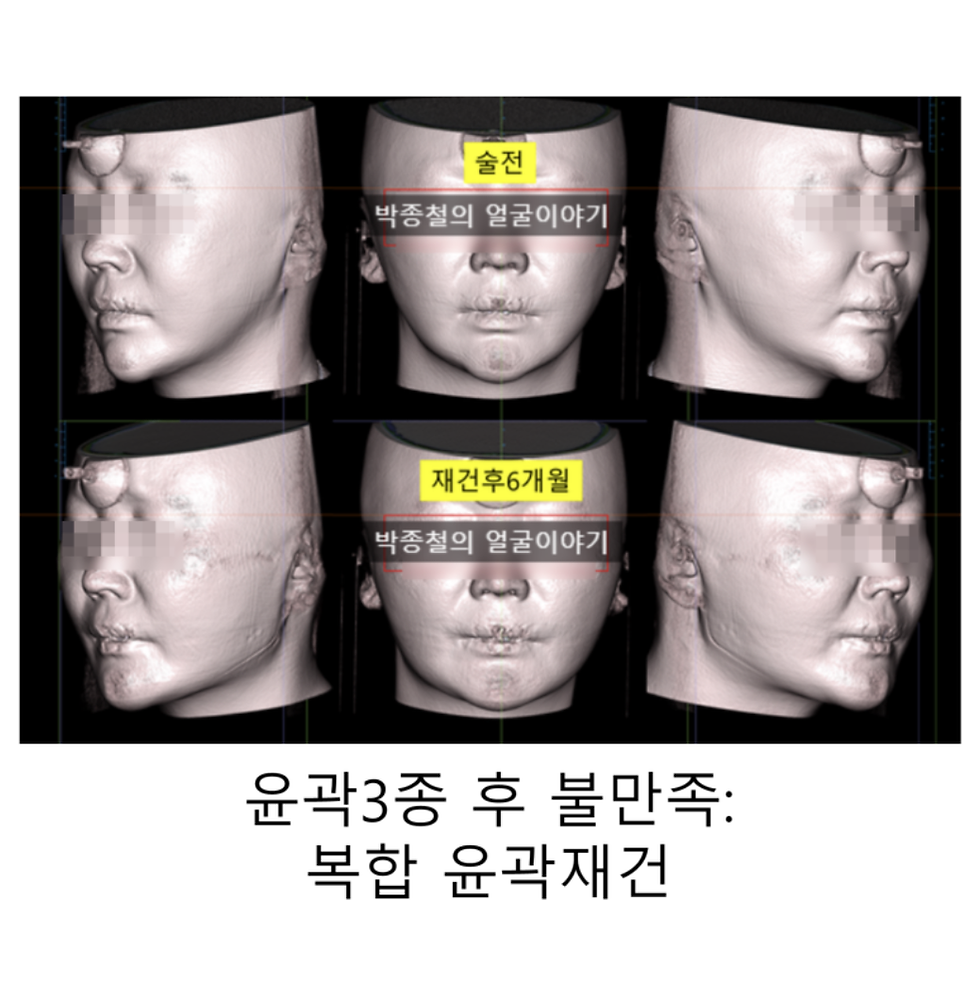Objective Analysis of Soft Tissue Changes After ASO Surgery for Protruding Mouth: Lips, Nose, and Philtrum Based on 3D Data
- Dr. Park

- May 1
- 3 min read
Greetings. I am Dr. Jong-chul Park, an Oral and Maxillofacial Surgeon.
Today, I aim to provide an explanation based on objective data regarding the soft tissue changes—specifically concerning lip shape, nose shape, and philtrum length—that can occur after Anterior Segmental Osteotomy (ASO) surgery for correcting a protruding mouth.
While the improved facial profile after protruding mouth surgery can be visually confirmed through clinical photographs, a more objective understanding is achieved by precisely comparing pre- and post-operative soft tissue changes within the same coordinate system. We hope this analysis helps patients considering protruding mouth surgery determine if ASO is the appropriate procedure for them.
Patient Profile and Surgical Procedure

Condition: Patient presenting with bimaxillary protrusion (protruding mouth).
Surgeries Performed: The patient underwent ASO surgery for protruding mouth correction, combined with mandible angle reduction (square jaw surgery) and chin T-osteotomy (genioplasty without advancement).
Analysis Method: The images below show the pre-operative (left) and post-operative (right) states aligned in the same coordinate system for accurate comparison.
Soft Tissue Changes Observed from the Lateral View

Nasolabial Angle Improvement: The angle formed by the columella (base of the nose) and the upper lip (Nasolabial angle, indicated by the red arrow in the image) shows improvement towards the ideal range. This change results from the posterior movement of the protruded maxillary anterior teeth and alveolar bone.
Lip Volume Reduction: A noticeable reduction in the volume of the previously thick lower lip contributes to a more balanced lip appearance. The protrusion of the upper lip was also resolved.
Relative Chin Advancement Effect: Although the chin bone itself was not advanced, the posterior repositioning of the mouth creates an aesthetic effect of relative chin projection.
Submental Area Improvement: It is often observed that the submental (under-chin) contour improves post-surgery, even without direct surgical manipulation in that area. This is presumed to be a secondary effect resulting from the normalization of the protruded maxilla and mandible, leading to reduced tension in perioral muscles and stabilization of tongue posture. This suggests the interconnectedness of facial musculature.
Soft Tissue Changes Observed from the Frontal View


Philtrum Length Change: When compared using a horizontal reference line (red line) at the same height, there was minimal vertical change in the position of the Subnasale (point where the columella meets the upper lip) or Subalare (point at the base of the nasal ala). However, the distance from the Subnasale to the Labiale superius (most anterior point of the upper lip vermilion border) – representing the philtrum length – showed a slight increase post-operatively.
Nose Shape (Nasal Width/Flaring) Change: Vertical reference lines (red lines) were set at the same position to compare nasal width. Visually, there was almost no observable change in nose shape, particularly nasal width. While superimposed animated images might reveal minute differences, these could be attributed to changes in facial muscle tension and are not considered clinically significant nasal flaring.
Soft Tissue Changes Observed from the Inferior View

Comparing from a bottom-up perspective, the nostrils, which were less visible pre-operatively due to the protruded lips, become naturally visible post-surgery. This visually confirms the successful posterior repositioning of the maxilla. Furthermore, while only the lower lip appeared prominent before surgery, both upper and lower lips present harmoniously afterwards. This view effectively demonstrates the degree of protruding mouth correction.
Conclusion and Considerations
In cases like this patient, characterized by protrusion of both upper and lower lips and a relatively retruded chin, ASO surgery can effectively improve lip shape and create an aesthetically pleasing profile line from the nose to the lips and chin.
However, as confirmed by this objective analysis, potential candidates should be aware that while significant changes to the nose shape are generally not expected with ASO, the philtrum length may appear slightly longer post-operatively. This is an important factor to consider before deciding on the surgery.
We hope this data-driven analysis provides objective information on the soft tissue changes following ASO surgery and assists individuals concerned about a protruding mouth in making a well-informed decision. Thank you.

Soft Tissue Changes After ASO Surgery



Comments